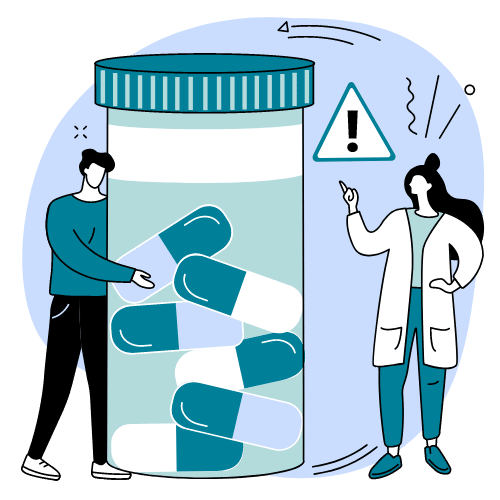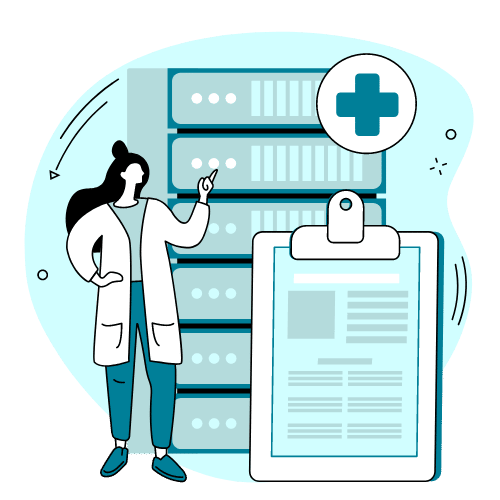A Guide To Meth Withdrawal
Making the decision to finally break an addiction is incredibly tough. Despite the damage the drug has done to your health, your relationships, your reputation, and to your life as a whole, it can feel impossible to quit. Stopping a methamphetamine addiction is quite possibly the hardest of all — but still not impossible. It is important to have a base of knowledge when considering a change. So many people never reach the point of beginning their journey to recovery simply because they do not know where to begin. Many do know where to begin, but hearing general stories about detox and recovery causes fear that keeps them from ever trying. For these reasons, it is critical for us to help educate you. It is for the sake of you and your loved ones. If you’re reading to learn about meth withdrawal, we will work to dispel some of your fears about the detox process and explain that recovery is possible. All it takes is the right plan and the right team to execute it.
The Dangers of Meth Addiction
Meth is a drug that is made by using ephedrine and/or pseudoephedrine, which are found in over-the-counter cough medicines. Meth acts similar to the way prescribed medications like Adderall (a combination of amphetamine and dextroamphetamine) act on a chemical level. Along with the typical cough medicine component of the recipe for meth, there are many incredibly harmful ingredients that are cycled through in creating it in illegal labs. These dangerous ingredients may include:
- Acetone
- Battery acid
- Paint thinner
- Lithium
- Freon
- Drain cleaner
- Ammonia
- Ether
- Red phosphorus
Consuming any of these things even once is dangerous. Continued consumption can cause lifelong health issues if not stopped as soon as possible. The process of making meth is also incredibly dangerous. Making meth can be extremely dangerous due to the toxicity and flammability of many of these substances. Since meth is made in secret labs, often by unqualified people, it is impossible to know which toxic chemicals will be ingested when meth is used.
How Many Americans Use Methamphetamine?
According to the 2017 National Survey on Drug Use and Health, approximately 1.6 million people reported using methamphetamine in the past year. About half of that 1.6 million, 774,000, reported using it in the past month. The average age of new meth users in 2016 was 23.3 years old. In Massachusetts, while meth still remains one of the less used illegal drugs in the state, it is growing in popularity, according to a 2019 report from the Boston Globe. Now that we have established you’re not alone if you find yourself in a battle with meth addiction, let’s take a look at how you can get out.
Does Anyone Get Treated For Meth Addiction?
Yes, but not nearly enough people get into treatment. Meth is a tough drug to quit. Meth is a stimulant drug that rapidly increases dopamine in the brain. Dopamine is the hormone that helps us feel happiness, joy, and pleasure. This brain chemical also gives us motivation and energy. Meth causes a rapid and intense high. After the intense and very pleasurable high, a crash period takes place that will leave a person feeling anxious, irritable, and depressed. Due to these feelings, it is easy to return to meth to pull yourself out of the crash period. During extended meth use, the drug will begin to diminish and deplete your brain’s ability to create dopamine on its own. Finding the pleasurable effects from the drug becomes harder and harder to achieve, leading to more and more use. During this time, the chance of addiction is almost 100% once pleasurable effects are no longer the reason for use. A person addicted to meth may begin to have intense bouts of paranoia (general fear someone or something will harm you) and psychosis (losing touch with reality) because of the damage done to the brain. The damage can be stopped and greatly reduced, though. Those that quit meth can lose all psychological symptoms within 10 days of quitting. Treatment to reach recovery from meth addiction will begin with a period of detox to rid the body of the toxins without the worst of withdrawal symptoms. A medically supervised detox center such as Swift River can make the process much easier, safer, and more comfortable.
What Is Meth Withdrawal Like?
While ridding yourself of the harmful toxins that are in meth is entirely positive, there can be some discomfort in the early stages that make it feel otherwise. Withdrawal symptoms can begin soon after the last dose of meth. Withdrawal symptoms can be physical, mental, or emotional — commonly a mixture of the three. Methamphetamine withdrawal symptoms can include:
- Fatigue
- Agitation
- Insomnia (inability to sleep)
- Cravings for meth
- Itchiness
- Dry eyes
- Depression
- Anxiety
- Paranoia
- Suicidal thoughts
- Fever
- Nightmares
- Nerve pain
- Muscle aches
- Headache
- Nausea and vomiting
- Increased appetite
- In severe cases, seizures can occur
As you see, meth withdrawal can happen in a number of ways. While not every person will experience all of these symptoms, most will experience at least a few in different ways.
Meth Withdrawal Timeline
Withdrawal from meth typically takes about one to three weeks to completely work through. In some cases, meth withdrawal can last more than a month. The length of time it takes depends on a variety of factors that include:
- Frequency of use
- Amount of doses
- General health
- Age
So it’s safe to say, the more severe the addiction, the longer it will take. Withdrawing from methamphetamine will be different for each person. However, meth withdrawal can generally be broken into two stages — acute withdrawal and subacute withdrawal. Acute withdrawal is what you will first experience. It typically lasts about seven to 10 days. During this time, a person will have the peak of symptoms around 24 hours after the last dose. What many do not realize is that the symptoms typically decline from this point on. Unfortunately, many fear the symptoms will worsen, and they return to using meth. Symptoms during the acute period often include:
- Mood swings
- Fatigue (sleeping 12-plus hours a day)
- Increased appetite
- Depression
- Anxiety
- Cravings
Most physical symptoms of withdrawal happen during the acute stage of withdrawal as well. Subacute withdrawal is simply the continuation of symptoms but at a reduced level over the course of the two-plus weeks after acute withdrawal. During this time, there will still be lingering psychological symptoms, like cravings, which can last even past two weeks. This is why it is important to follow detox with a plan of treatment with a group of medical professionals. With the help of these professionals, you will be better equipped for handling the emotional toll recovery can take. These professionals will also help if there are any significant post-acute withdrawal symptoms (PAWS). This is an occasional occurrence seen in those that chronically used methamphetamine. The symptoms are the same as the others but can last for upward of six months after the last dose. With treatment, all of these things can be handled more easily and comfortably.
Should I Quit Cold Turkey?
While this blog is not to be mistaken for medical advice, we urge you to not quit meth cold turkey. It can be extremely dangerous to do so. Quitting and detoxing from meth is best done with the help of medical professionals. They can assist you with all of your smallest and biggest needs throughout the entire process. This may be as little as providing you water to stay hydrated or as much as providing medicines to help with discomfort.
Detoxing With Medical Professionals
Regardless of the addiction, beginning to rid yourself of the toxins that have been in your body should be done with the oversight of medical professionals. With methamphetamine, it is very important that this be done. As we talked about earlier, meth is incredibly harsh on the body. Along with the actual key ingredients, there are often harmful chemicals present in the crystal-like substance as well. When you begin recovery from meth addiction and dependence, medical detox is often the first step. The need for medical detox is found in an initial assessment with a treatment facility. Medical detox ensures a person does not experience the worst possible physical and mental withdrawal symptoms. This also ensures a person is set up entirely for beginning treatment. During treatment, a person in recovery from meth addiction will partake in therapy models that treat the mind, body, and spirit. Therapies will help a person rethink mental approaches through individual and group support sessions, gain strategic tools to approach future interactions, and relearn social bonds and enjoyment of interests. Having a safe, judgment-free, and comfortable medical detox lays the foundation to begin formal treatment using these methods. After a medical detox, the mind will be more clear and most of the physical symptoms of withdrawal will be over. The very best medical detox facilities will strengthen the recovery process by providing tools early on to you or your loved one to prepare for treatment.
Meth Addiction Treatment in Massachusetts
Following detox, rehab is the next and safest step in the journey to reaching long-term recovery. Choosing residential treatment only increases the comfort level during the rehab process. With a compassionate team of healthcare providers and a safe environment, change can really begin. With a personalized approach that is tailored to your specific needs and your background, the path to recovery is made more simple than facing a runaround of treatments that are not important for what you need as an individual. At Swift River, our residential treatment program lasts approximately 30 to 60 days, with the last 10 days dedicated to a seamless transition into outpatient treatment.
Call Swift River – Massachusetts Today
At Swift River, we offer safe and comfortable medical detox to help in ridding the body of the harmful toxins of meth while also helping to prepare you for meth rehab. Meth withdrawal can be uncomfortable and dangerous when faced alone. Please contact us at (844) 906-0978 if you plan to stop methamphetamine or have questions about how to stop. We would love to be a step in the right direction for you.













